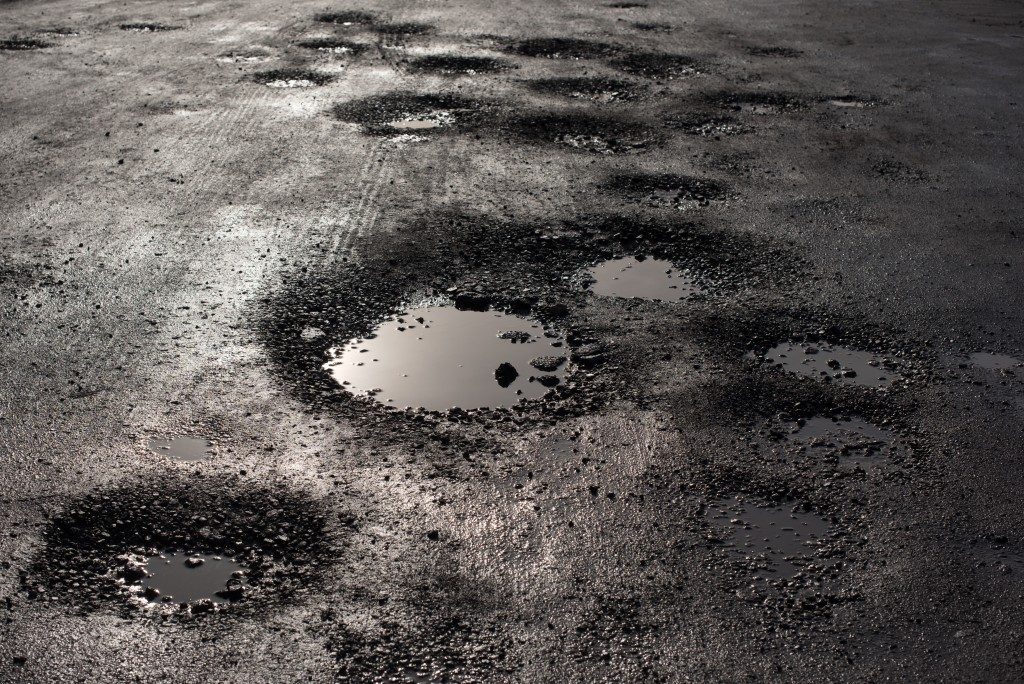A massive pothole opened on a bridge deck in the Salt Lake City stretch of Interstate 15. The hazard was a staggering 2-by-3 feet and opened straight into the road below. Authorities diverted vehicles away from the portion of the bridge as road workers repaired the pothole.
The pothole on the I-15 isn’t the only fissure to inconvenience motorists in Salt Lake City. Some residents of Fuller Avenue have compared the thoroughfare to a war zone because of the many deep potholes that scar its surface. Motorists who travel through Redondo Avenue and Highland Drive have similar thoughts about those streets because of their multiple potholes.
Every year, new potholes appear on Utah’s streets, especially around springtime. Sinkholes are another kind of ground hazard that can appear at the same time. But there are stark differences between these two hazards, from the method of their formation to the possible threat they pose to travelers.
Pesky Potholes

Potholes form when water seeps into the concrete or asphalt of a road or driveway. During the winter or a cold snap, the water inside the concrete or asphalt freezes and expands. The ice keeps the concrete from breaking up, holding the debris together. When the weather warms up, the ice melts and scatters the asphalt. It leaves behind a depression or fissure, which is the pothole. This is why they tend to appear on Utah’s streets during spring.
Professionals throughout the state can easily repair these nuisances if they appear on roads or driveways. Road workers routinely repair potholes, and homeowners can have their driveways repaired by experts in concrete resurfacing in Salt Lake City.
Potholes can be dangerous because of the structural damage they can cause to roadways, like the one that appeared on Interstate 15. They can also cause damage to vehicles that drive over them. A deep enough pothole can blow a tire or even crack an axle if the vehicle was driving fast enough. They could also get the vehicle stuck.
They can be serious inconveniences, but they are rarely dangerous. Sinkholes, on the other hand, can be downright terrifying.
Sinister Sinkholes
Sinkholes occur when cavities underneath the ground suddenly collapse. This creates a sudden vacuum that drags the surface ground to fill up itself. This can happen when water erodes limestone bedrocks, wash away sand or other particulate matter, or opens up an underground space. Spring melts, and heavy rain can provide enough water to cause sinkholes. Ruptured sewer and water lines can also create sinkholes, sabotaging the foundations of buildings and city blocks until they collapse.
Unlike potholes, even the appearance of a sinkhole can be deadly. Enormous sinkholes tens of feet deep or wide can appear suddenly or become hundreds of feet wide in a matter of hours. People have died when sinkholes simply swallowed up their cars or even their entire building. Sinkholes pose a very real threat not only to motorists, but also residents and bystanders. It could take months, if not years, to fill up and properly repair the damaged a sinkhole can cause.
In a world where people increasingly tend to exaggerate the slightest inconvenience, it’s important to differentiate what is trivial and what is a threat. Potholes may delay a driver or, at most, cause a costly repair. Sinkholes, on the other hand, have cost people their lives. Learning the difference may stop trivializing a threat that could strike at any time.

